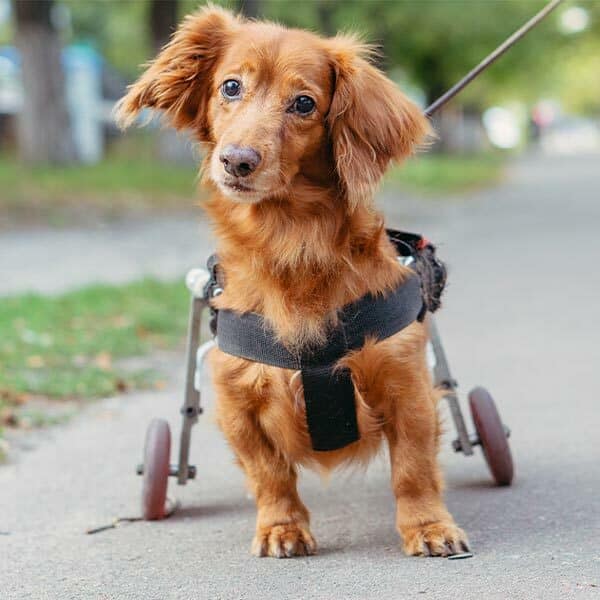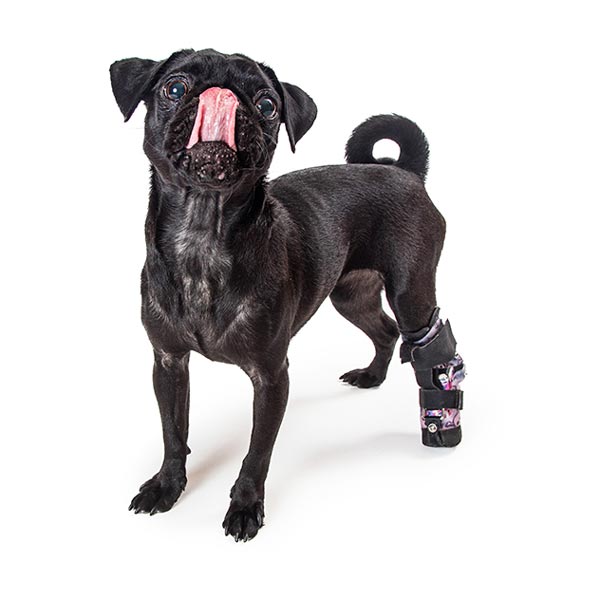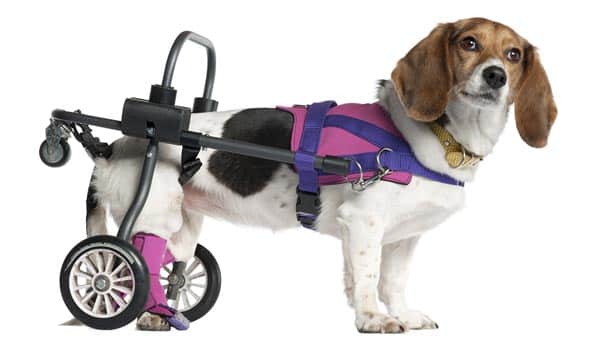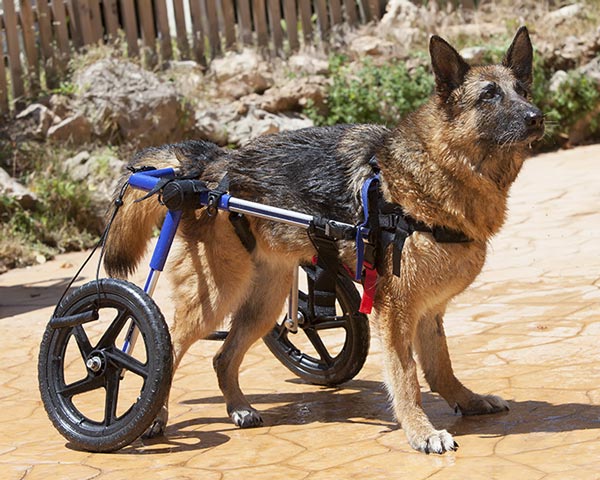Vital Information about Dog Prosthetics

We love our dogs — they’re the most popular pet to own worldwide. But a huge number of our four-legged friends, well… aren’t.
Whether your best friend is having medical problems that may result in an amputation, or they’re already a tri-pawed — chances are, you’re looking through the options trying to figure out how you can help.
Relatively new as a treatment option, dog prosthetics can be a great help with a variety of mobility-related health conditions. But we’d bet you have a lot of questions about how they work and whether your dog is a good candidate for a prosthetic.
Our article is here to walk you through the entire journey.
What Types of Dog Prosthetics Are There?
There are a wide variety of dog prosthetics, orthotics, and more available for specially-abled dogs. What may work for your dog will depend on the medical condition and limbs affected. We’ll go through them all.
Dog Splints
For shorter-term injuries as opposed to amputation, dog splints can help with recovery. These work very similarly to human splints, which give the limb extra support where needed. The key difference is usually in their durability!
Dog splints are manufactured to be very durable due to the wonderfully energetic nature of our furry friends. They’re made to withstand rough and tumble because our dogs don’t often understand the term strict bedrest!
Splints are made to feel comfortable and natural for your dog, but it will still take them at least a few days to get used to walking with a splint. Some dogs may not take to them well at all, though. It all varies depending on your dog’s temperament.
Front Limb Dog Prosthetics
Forelimb, or thoracic prosthetics, are designed to help dogs who are missing all or part of a front leg. The type of artificial leg will depend on the particular reason for the missing limb. So these will vary in function and appearance, depending on whether the full limb is missing or if it’s a congenital deformity causing the disability.
Front limb prosthetics can help considerably with movement after amputation. While some dogs find no trouble in getting around post-surgery, others may struggle. These comfortable prosthetics help restore balance for your pet.
Additionally, three-legged dogs may initially see no problems in mobility after amputation. But later in their life, many tripawds struggle with arthritis earlier in their lifespan than their four-legged counterparts. This is because many breeds carry the majority of their weight in their upper body, so undue stress is put on their remaining front limb.
For these dogs, prosthetics can be a great relief. They take the stress off of the remaining forelimb and spine.
To be an ideal candidate for most front leg prosthetics, your dog will need to have some remaining radius and ulna. These bones are located at the very top of a dog’s leg, closer to the shoulder joint. This allows them to still have some movement and control in the limb, helping them to control the prosthetic.
Your dog will also need to have a functional elbow joint and muscles surrounding. Again, this is to ensure your dog can move the prosthetic with ease.
Hindlimb and Pelvic Prosthetics
Similarly, hindlimb and pelvic prosthetics are designed to aid mobility in dogs missing all or part of a back leg. The same as above, these prosthetics will vary depending on the specifics of the amputee.
It’s often thought that a dog who has a hindlimb amputation will have an easier recovery than a dog with a front limb amputation. As we mentioned above, this is mostly due to some breeds carrying the vast majority of their body weight upfront. But this is only true of larger breeds or broad-shouldered breeds.
For this reason, hindlimb prosthetics are a viable option for many dogs. They can help restore balance for dogs who struggle with their mobility post-amputation.
Alternatively, dogs who have been missing a rear limb for some time may find it relieves pressure on their remaining rear leg. Many dogs suffer from arthritis and hip dysplasia later in their lives, and this is particularly difficult for specially-abled dogs. A prosthetic may be a viable option for these pets.
To be an ideal candidate for a pelvic prosthetic, your dog should have some of the tibia and fibula remaining. This is the upper half of their back leg and helps them move the prosthetic with ease. Similarly to the above, the dog should also have a functional hip joint and surrounding muscles.
What Makes a Good Prosthetics Candidate?
We’ve touched upon this briefly above by going into the medical minimum a dog would need to have to be a good candidate for a prosthetic. But it’s not that simple.
Dogs are all unique in personality, temperament, and quirks. Even some dogs who may meet the medical requirements for a prosthetic may not adapt to using a prosthetic well. It all comes down to the quality of life.
There is a wide array of other options for specially-abled dogs. From wheelchairs to carbon fiber body jackets for full limb amputees — only a vet will be able to make the best recommendation for your dog’s specific circumstances. Advances in technology mean the options are only expanding
The Future of Dog Prosthetics
As we mentioned in the introduction, prosthetics for dogs are a pretty new idea. This is partially because, until recently, amputation in animals and people was very different.
In people, we tend to only remove the portion of the limb necessary. For animals, it used to be that the entire limb would generally be removed to avoid any further issues with it. This is slowly changing as pet prosthetics become a more common solution.
This change in popularity also comes down to research changing what we know about mobility in specially-abled dogs, particularly tripawds. While it was once thought that three-legged dogs did just as well as their four-legged counterparts, we now know they suffer from a range of long-term side effects. This includes tissue breakdown, arthritis, and degenerative joint problems in the remaining limbs.
Developments in 3D printing technology also mean we can now customize prosthetic limbs for each pet for a fraction of the previous cost. For all these reasons, it’s likely dog prosthetics will become more and more mainstream.
Speak to Your Vet
While researching dog prosthetics is a normal part of the journey for specially-abled pet owners, your vet knows best. Speak to your vet about your pet’s viability for dog prosthetics, as well as other options.
We’ve got loads more articles on our blog on all things dog, so be sure to check it out.






